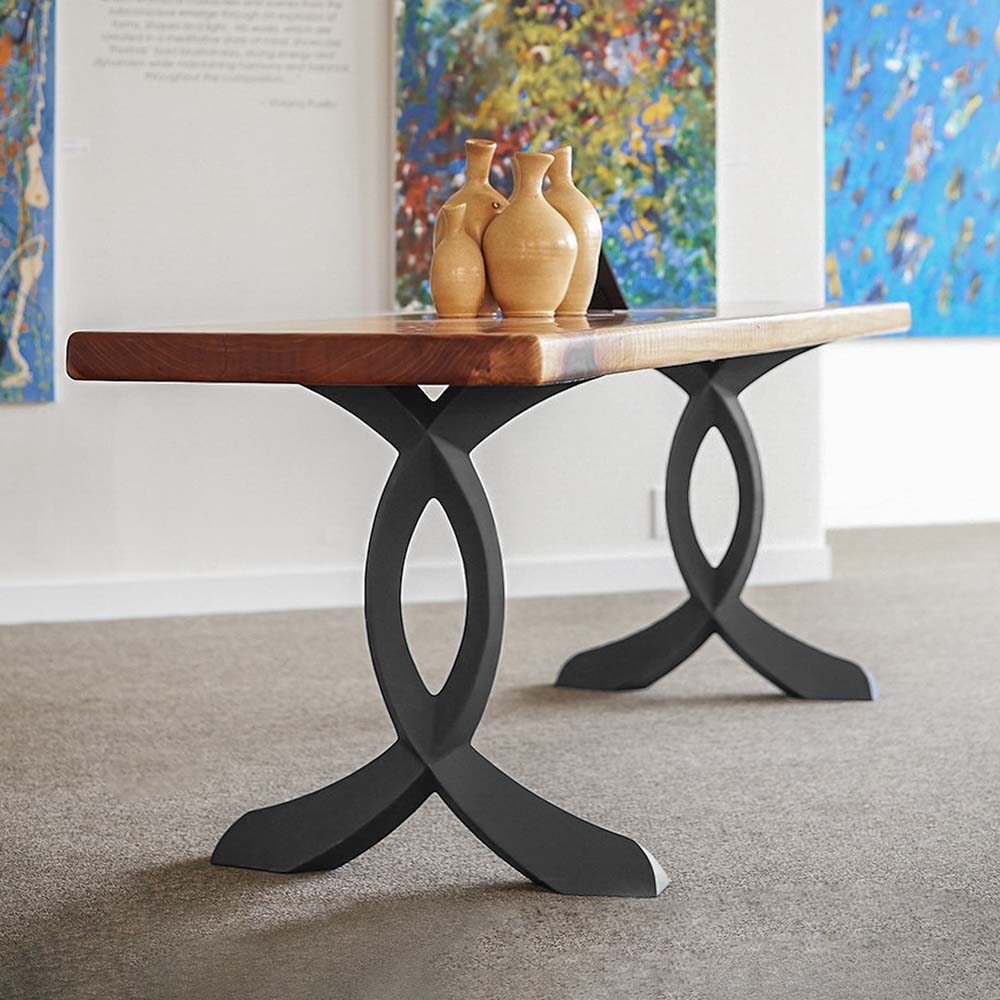Exploring Different Layouts for Dining Room Table Legs to Match Your Aesthetic
Exploring Different Layouts for Dining Room Table Legs to Match Your Aesthetic
Blog Article
Table Legs: How to Select the very best Designs for Your Room
Choosing the ideal table legs is essential for both visual and useful consistency in your eating area. Whether your room flaunts a streamlined, contemporary vibe or leans towards a more typical setting, the design of the legs can significantly influence the total look. Tapered legs show modern beauty, while transformed legs offer a nod to classic appeal. Beyond style, the material-- be it cozy timber or sleek steel-- plays an essential role in establishing the tone. Yet how do you guarantee these elements match your existing design while offering the required security? The response lies in a balanced method.
Examining Your Dining-room Design
Just how do you figure out the ideal table legs for your space? The response starts with a thorough evaluation of your dining-room style. A natural layout ensures that your table legs boost the total aesthetic instead of clash with existing elements. Start by observing the building features of your eating room. Exist popular attributes such as revealed light beams, detailed moldings, or minimalist lines? These information often dictate whether a traditional, rustic, contemporary, or commercial design is most ideal.
An eating space with smooth, modern-day chairs and metal accents might profit from basic, streamlined table legs. Alternatively, an area filled up with classic items and rich textiles may call for luxuriant, carved legs.
Lighting additionally impacts perception. Natural light can accentuate particular products and finishes, while artificial lighting can highlight various elements. Account for the space's scale and proportions. Large, open dining-room can accommodate much heavier, more substantial legs, whereas smaller areas require even more delicate, unobtrusive layouts. By very carefully assessing these aspects, you can pick table legs that harmoniously blend with your eating room's style.
Popular Leg Styles Clarified

One widespread style is the conical leg, renowned for its streamlined, modern look. Next off, the transformed leg functions elaborate spindle-like styles, typically discovered in conventional and farmhouse setups.
Cabriole legs, with their unique curves, are identified with French Provincial and Queen Anne furnishings. Their graceful, moving lines bring a feeling of elegance and historic appeal (dining room table legs). For those preferring a durable and simple layout, square legs offer tough support and a tidy, geometric appearance, ideal for commercial or minimalist rooms
Lastly, barrette legs use a retro, mid-century contemporary vibe. Made from steel, these legs are both light-weight and strong, adding an unique visual comparison to wooden table tops. Understanding these designs will assist you in picking eating table legs that improve your space's visual and performance.
Material Factors To Consider

Metal legs, commonly made from stainless steel, iron, or light weight aluminum, supply a contemporary and industrial appearance while making certain durable assistance. They are normally a lot more resistant to wear and tear, making them a durable selection.

Various other products like bamboo or rattan use environmentally friendly alternatives, bringing an all-natural and relaxed vibe to the eating location. Each material has its advantages and disadvantages, and the most effective option will certainly depend on your certain needs and preferences.
Harmonizing Aesthetic Appeals and Capability
Achieving the best equilibrium between aesthetic appeals and capability is essential when selecting Learn More eating table legs. While the aesthetic allure of table legs can substantially boost the overall atmosphere of an eating room, their useful elements can not be neglected. The design of the legs need to integrate with the area's décor, yet they need to also offer appropriate support and stability for the table.
Consider the building style of your space. Streamlined, modern-day insides may gain from minimal, metal legs that provide a tidy and inconspicuous look. On the other hand, traditional setups commonly match transformed or carved wood legs that add a touch of style and refinement.
Functionality encompasses the stability and sturdiness of the legs. For instance, trestle legs, recognized for their robustness, can supply strong support for bigger tables, making them perfect for family members or frequent performers. dining room table legs. On the other hand, pedestal legs can provide more legroom and adaptability, enabling much better seating arrangements
In addition, the elevation and positioning of the legs are important for comfortable eating. Legs positioned also far internal may impede seats, while those as well close to the side can limit movement. Hence, thoughtful consideration of both aesthetic and useful aspects is paramount for an optimal dining experience.
Personalization and Do It Yourself Options
Customization opens a realm of possibilities for producing eating table legs that are informative post distinctly tailored to your taste and demands. Specific style aspects, such as transformed legs, tapered shapes, or elaborate carvings, can be incorporated to mirror your design.
For those inclined towards diy (DO IT YOURSELF) projects, creating customized table legs supplies both a gratifying experience and the chance to accomplish a bespoke visual. Do it yourself enthusiasts can source resources and use woodworking or metalworking tools to craft legs that fulfill accurate specifications. Additionally, countless on the internet tutorials and workshops provide advice, making the process more obtainable for novices.
Eventually, whether deciding for specialist modification or embarking on a do it yourself venture, the capacity to tailor eating table legs makes sure that the end product balances with your indoor style vision, improving both performance and visual allure.
Verdict
Selecting the ideal dining table legs requires careful consideration of the general design of the eating room, consisting of existing building features and furniture. Inevitably, the selected table legs need to complement the style, supplying both aesthetic appeal and practical assistance.
Report this page